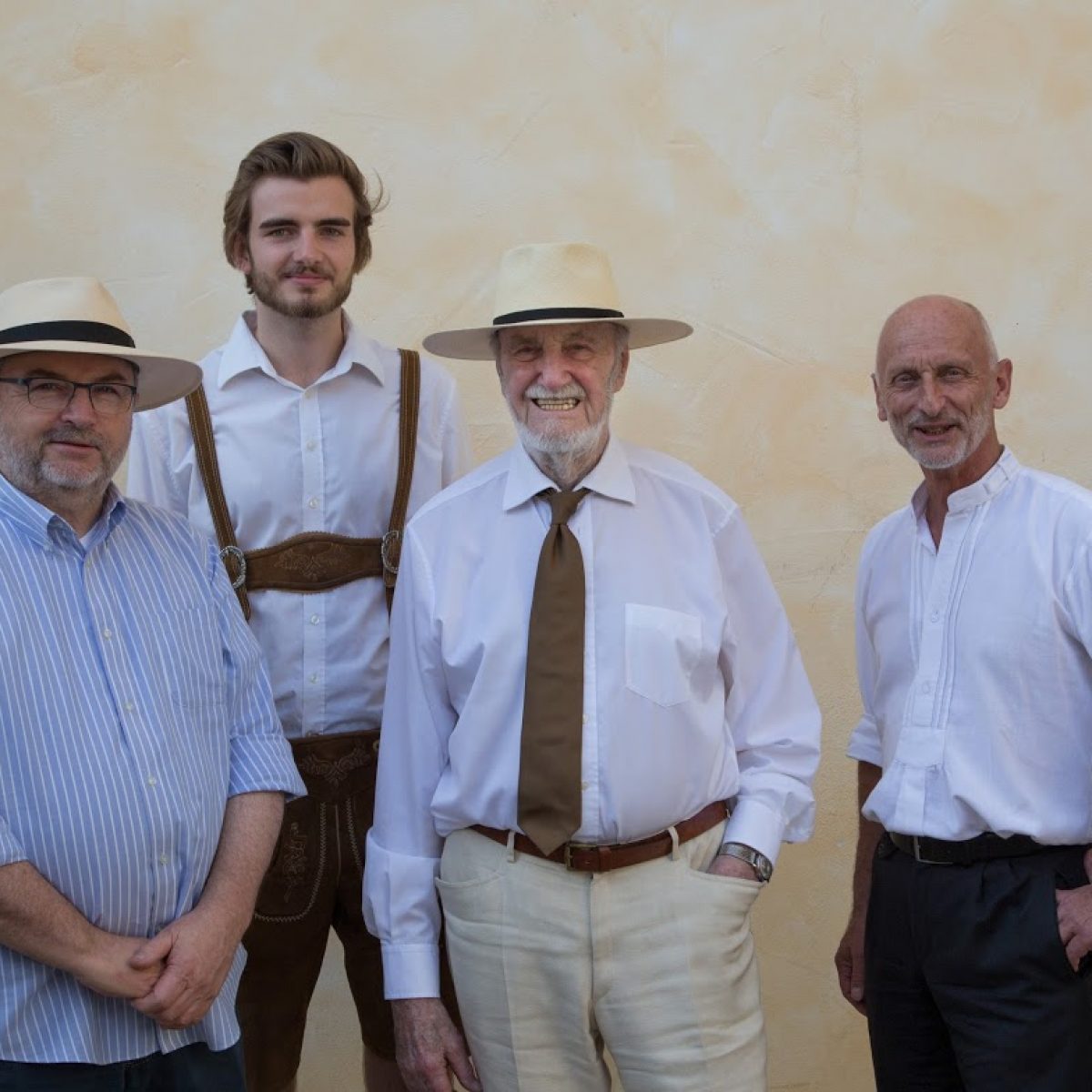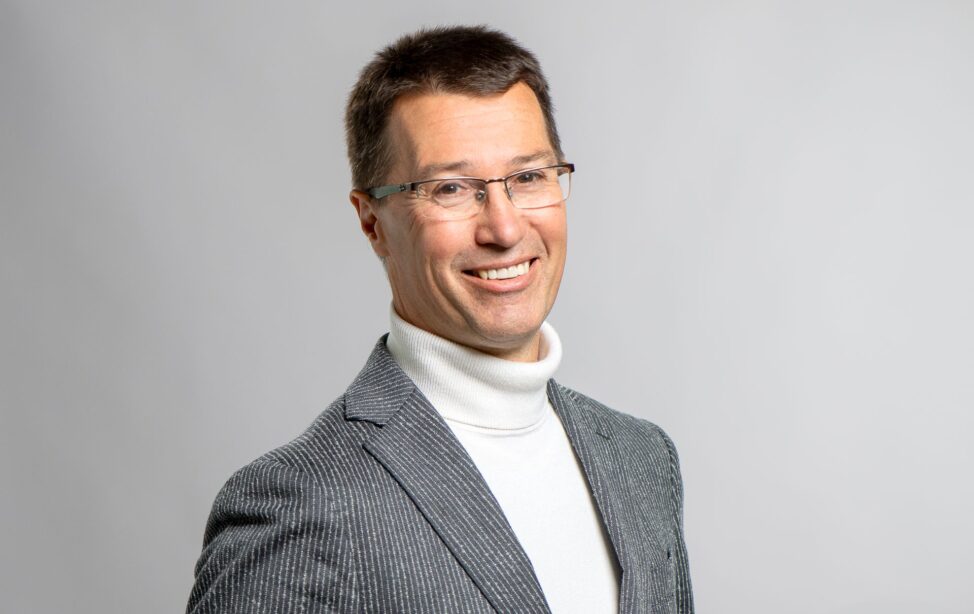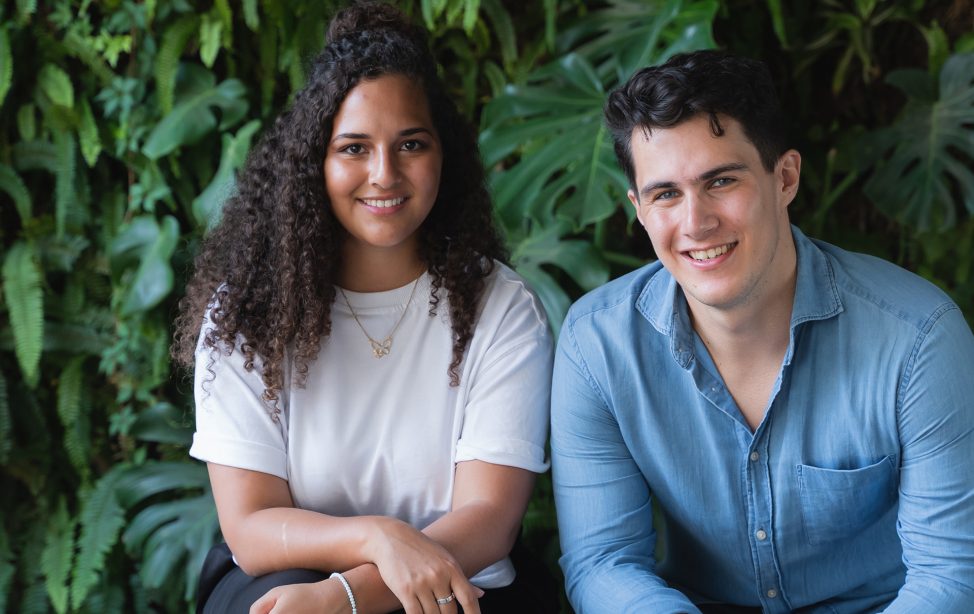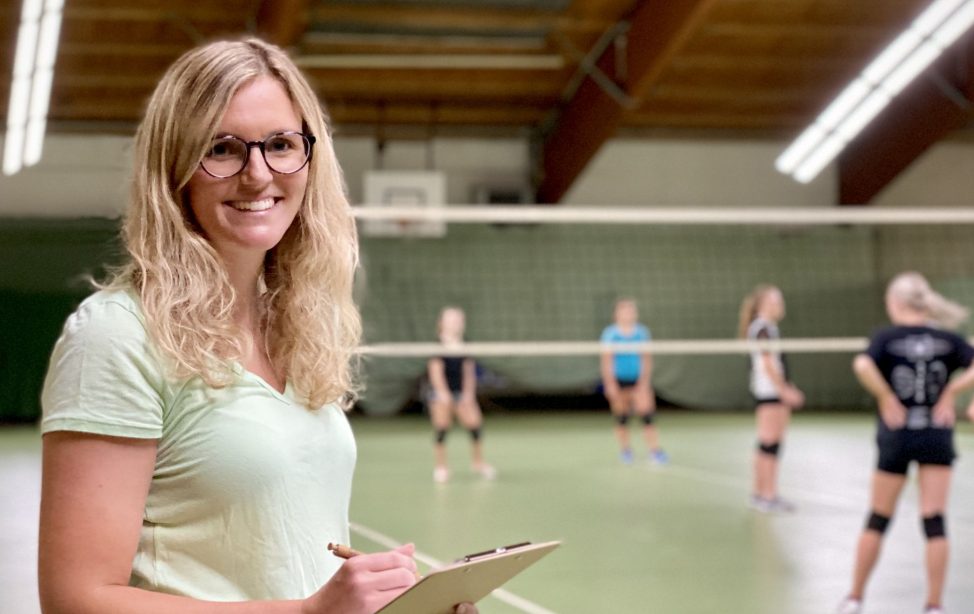
Three generations of TUM Alumni: Robert Schreiter (Diploma Mechanical Engineering 1979), Konstantin Lackner (B. Sc. Electrical Engineering and Information Technology 2016), Prof. Josef Rampl (Diploma Architecture 1947) and Dr. Michael Rieder (Diploma Geology 1980, Doctorate 1992) regularly meet at family gatherings, here in May 2017 on the occasion of the professor of Architecture's 100th birthday. (Image: private).
With his family’s support he went to TUM in Munich in 1940, where to begin with he provided assistance to the university. This also showed in the tasks given to the students of Architecture: one assignment for example was to design a brick building made from rubble, that is how the front of today’s Sport Scheck building at Färbergraben in Munich came into being.
In 1949 Josef Rampl completed his diploma. Back then he didn’t think that his family would consist of several TUM alumni one day. Two of his daughters have also married graduates of TUM, and meanwhile even one of his grand-sons has earned a degree from TUM. Yet all TUMlings have studied different subjects: “When we meet at family gatherings we mainly talk about what has changed in academic studies compared to back then”, says Michael Rieder. As a longtime employee of TUM he knows very well how rapidly a university can develop and change. “Back then books were read, things were drawn by hand, today all this is done through computers.”
Once a year Josef Rampl’s family is meeting up in Lower Bavaria. The retired professor of Architecture has bought an old vicarage there. His two sons are in the middle of renovating the four-sided farmstead and converting it into residential buildings. But on the 1st of May every year it turns into the large family’s meeting point: the last bigger celebration was Josef Rampl’s 100th birthday. His wish? “To carry on as before.”
Prof. Josef Rampl
Diploma Architecture 1947
Josef Rampl, born in 1917, has studied Architecture at TUM and graduated in 1949. Based on the recommendation of his fellow student Anneliese Eichberg he became an assistant at the Chair of Design of TUM Professor Abel. He fondly remembers being allowed to heat the professor’s room prior to marking the designs: “In there was a round iron stove, which ran on wood and briquettes, that was my job.” For 35 years Josef Rampl has built residential buildings, schools hospitals and churches with his own architectural office and has taught as a professor at Hochschule München (University of Applied Science in Munich). He still loves using his knowledge to help his kids and grand-kids – and when doing that he still prefers to use a machinist square, paper and pencil to design his ideas.
Dr. Michael Rieder
Diploma Geology 1980, Doctorate 1992
That Michael Rieder studied Geology was rather coincidental: he wanted to know what a geologist does and presented himself to Professor Paul Schmidt-Thomé. He was welcomed at the department so warmly and cordially that he immediately knew: “Studying here must be great.” After his graduation and working in an engineering office he felt an urge to return to TUM, he did a doctorate and remained at the chair, and in 2012 he was appointed Academic Director. The teaching awards tell their own tale: Michael Rieder cares about providing the students with knowledge and academic tools of the trade and about inspiring enthusiasm with his courses.
Robert Schreiter
Diploma Mechanical Engineering 1979
Robert Schreiter already knew his brother-in-law’s brother in school. Then they met again at TUM but had signed up for different subjects. Robert Schreiter studied Mechanical Engineering with a specialisation in Engineering Design and Product Development and worked as technical director and then managing director in factory automation. He always enjoys coming back to TUM, preferably to Vorhoelzer Forum, a “cool location”.
Konstantin Lackner
Bachelor in Electrical Engineering and Information Technology 2016
The youngest TUM Alumni is Konstantin Lackner who initially did his bachelor’s at TUM and furthermore graduated in Technology Management from the Center for Digital Technology and Management (CDTM). Meanwhile he lives in Berlin and works as a software engineer at the start-up Kreatize.
Your family is full of TUM Alumni, as well? Get in touch with us: alumniundcareer@tum.de.


